► Hyundai’s biggest Ioniq model yet
► We drive a prototype Ioniq 9 in California
► On sale in Europe in mid-2025
Somewhere beneath the camouflage here is the new Ioniq 9, Hyundai’s biggest EV designed for family life and zero-emission motoring.
As well as spending time with the new Ioniq 9 in a studio ahead of its official debut at the 2024 LA Auto Show, we’ve also had a chance to get behind the wheel of a prototype. It’s just a taste for now, but here are our first impressions of the new Ioniq 9, testing it at the brand’s proving ground in the desert wilderness of eastern California.
At a glance
Pros: Impressively quiet, smooth to drive, spacious and useful inside
Cons: Roly-poly suspension, steering is a little vague
What’s new?
This is an all-new model from Hyundai and the third Ioniq model since it became a proper sub-brand after the Ioniq 5 and Ioniq 6. We first saw what would become the Ioniq 9 with the Seven concept, with Hyundai design centre head, Simon Loasby, saying the number switched ‘to create space in the range’ for future Ioniq 7 and 8 models.
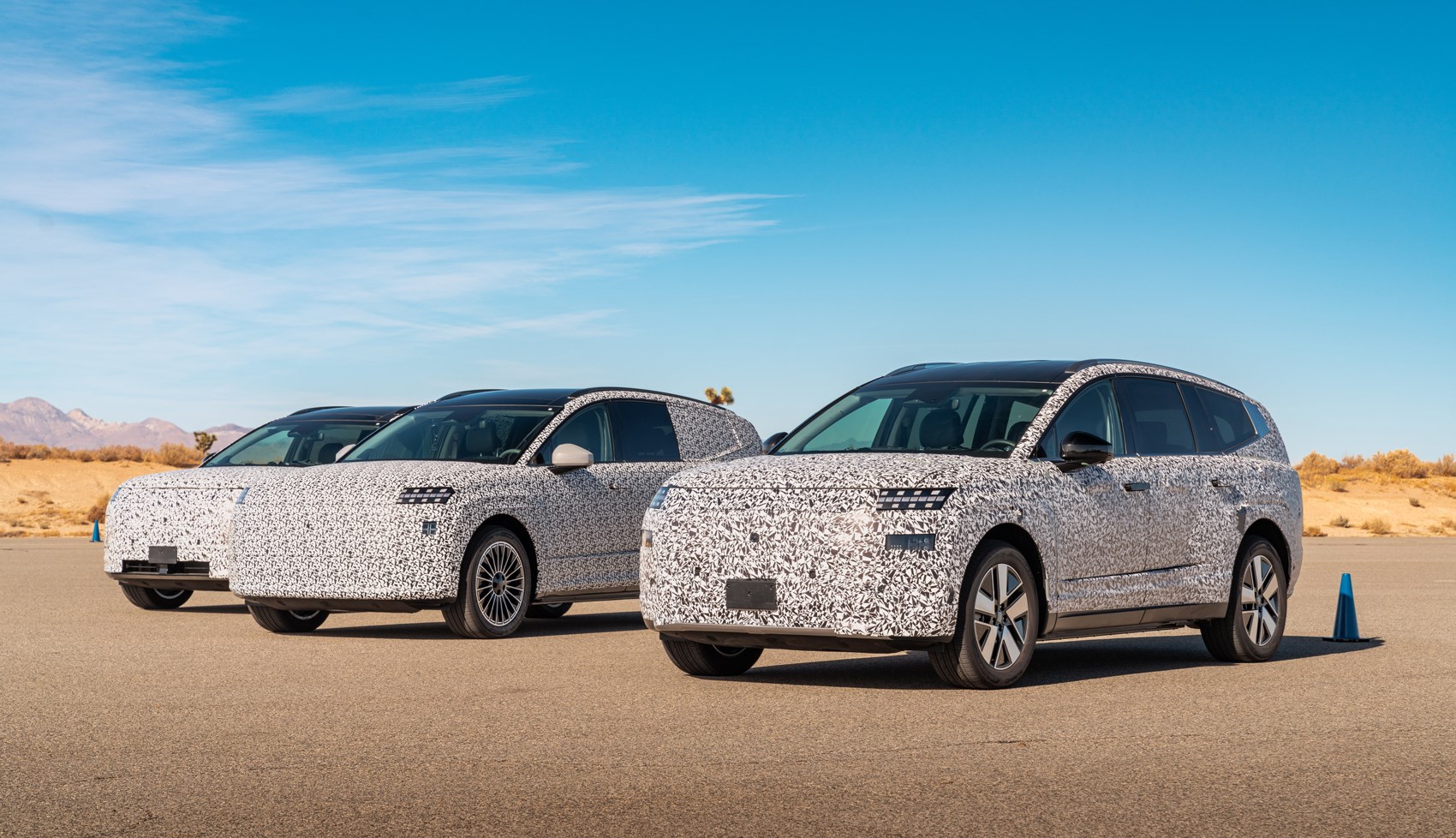
Loasby also talks of chess pieces in how the Ioniq 9 has been designed – the idea is that the Ioniq models should all look like they’re from the same family but have their own distinct look and use. While you can’t see a lot of these details behind the camo (you can see the whole thing in our first official pictures story here), details like the ‘parametric pixel’ lighting can still be seen through the layers of camo. Is it a bit wacky to look at in places? Yes. But I’d argue that it grows on you – perhaps more so than the continually-strange Ioniq 6.
Naturally, given its size, the Ioniq 9 is designed to be a large family SUV. It’s also very likely more positioned for the North American market – not least because Hyundai compares its dimensions and space inside to the Palisade, a model not available in Europe.
It’s an interesting car to stand next to, with design details that slightly mask the car’s size. This is a five-metre long car – making it longer than the already enormous Kia EV9 and even a full-size Range Rover, and yet I’d personally argue this looks physically smaller than both when you’re stood next to it.
What are the specs?
Like every Hyundai Ioniq model since the 5, the Ioniq 9 uses the Hyundai Motor Group’s e-GMP platform. Specific to the Ioniq 9, and standard across all variants is a massive 110.3kWh battery pack.
The Ioniq 9 comes in three performance flavours, and they’re a bit self-explanatory: Long Range RWD, Long Range AWD and Performance AWD. Naturally, the Long Range RWD is the rangiest, with a target of around 385 miles of WLTP range. At the other end of the scale, the Performance AWD claims a brisk 5.2sec 0-62mph time. More specs will be confirmed closer to its on-sale date in Europe.
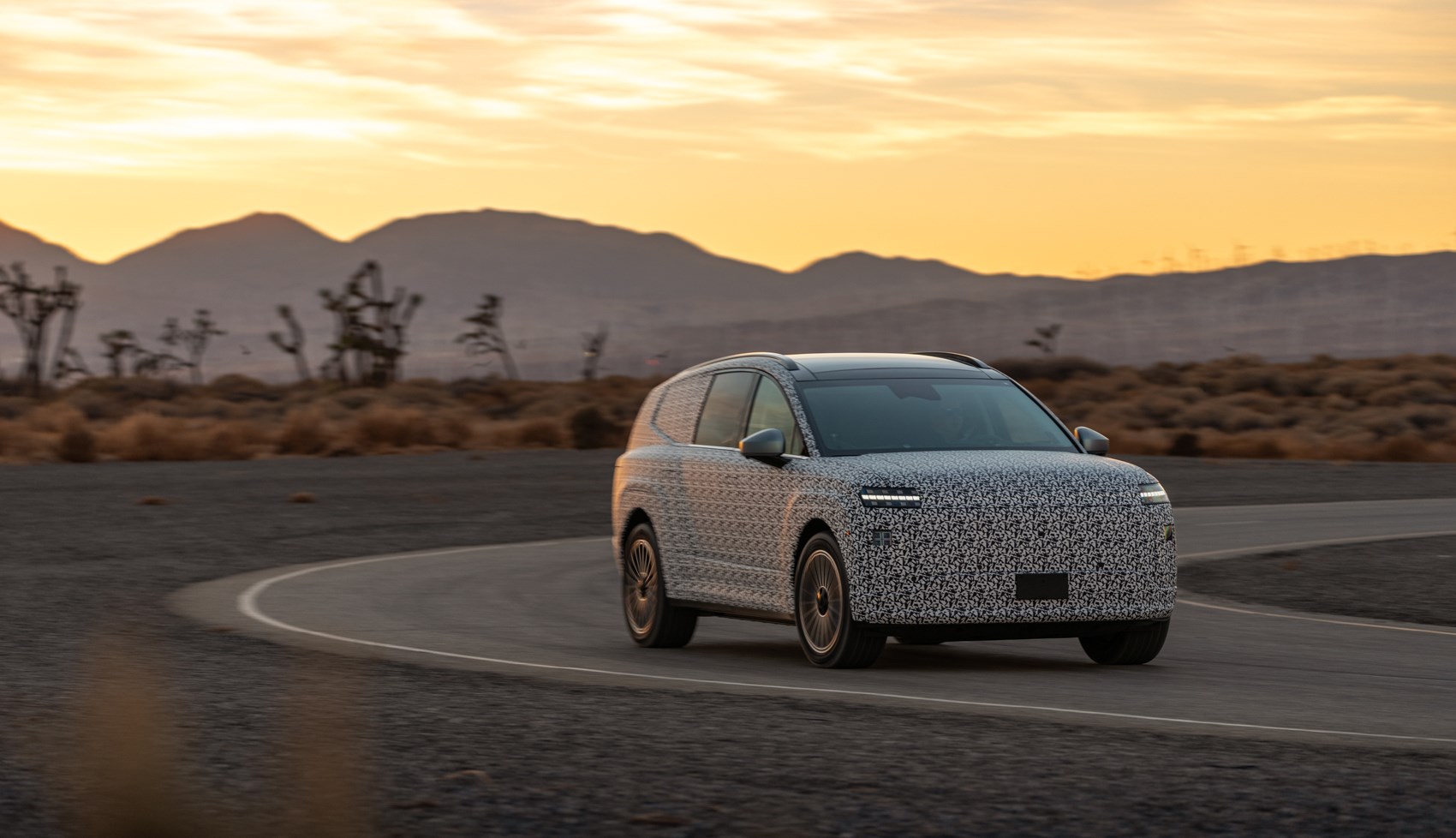
Proper European trim level specs haven’t been confirmed yet, either, but we’d expect the trim walk-up to start with Premium and rise to Ultimate and Calligraphy – the same structure as the Santa Fe. Hyundai says there will be seven- and six-seat versions – much like the Kia EV9 – but it’s TBC as to how the configurations will be set up in the UK. If it’s anything like the Santa Fe, the standard version will feature a conventional three-seat bench in the second row with the option to spec two captain’s chairs in the second row at an extra cost.
How does it drive?
Our prototype model was the flagship: a Performance AWD model, and were given some time at the California proving ground’s enormous oval designed to replicate an American highway as well as a twisty country road simulation.
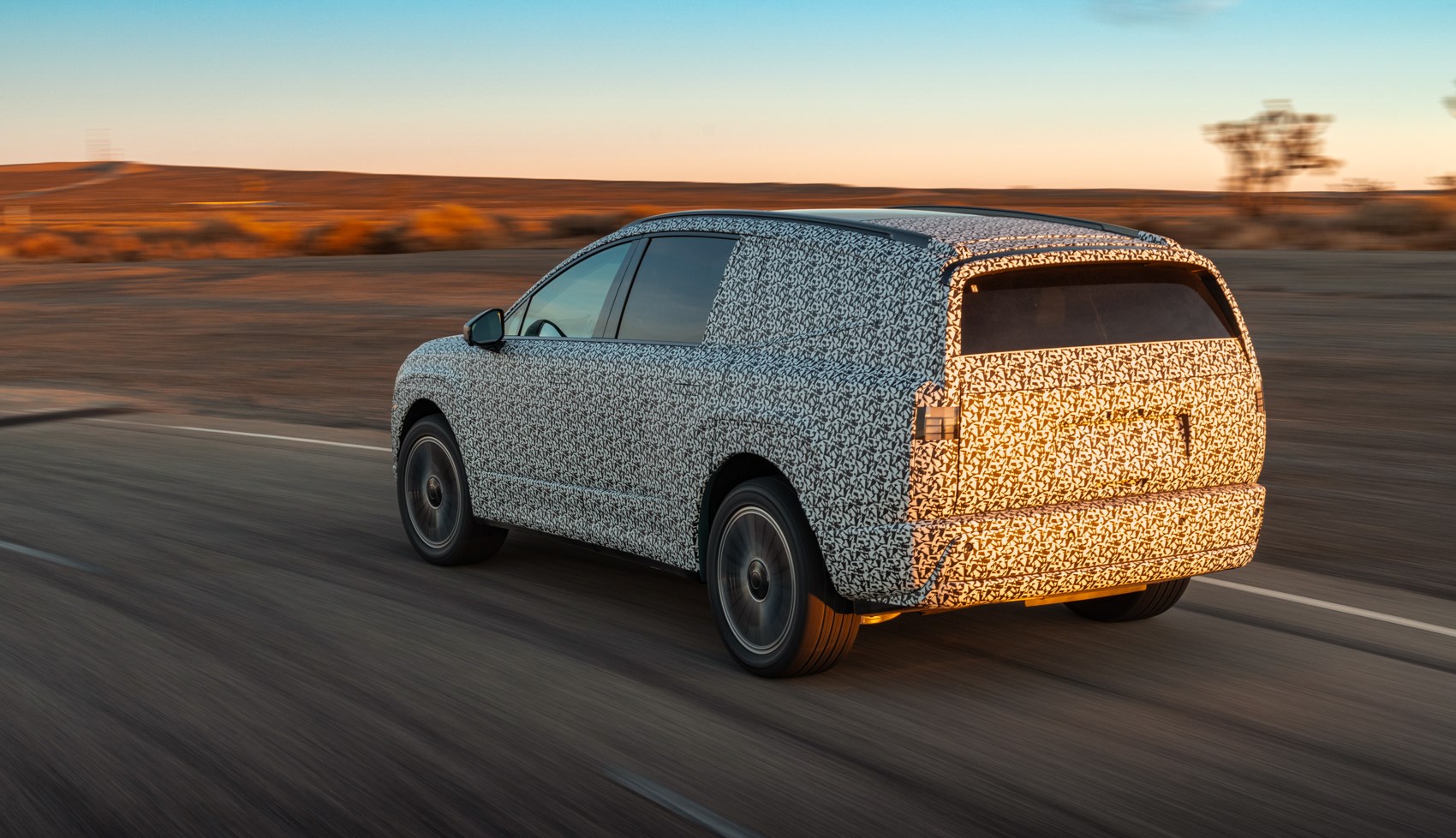
After getting adjusted, we start with a fast cruise on a simulated highway, filled with road imperfections and wide sweeping corners. Hyundai engineers and developers at the proving ground are keen to get across that this is likely where the Ioniq 9 will perform best, given it’s designed for families and big road trips.
Our brief experience would make us inclined to agree. The suspension feels designed to be soft, floating over larger undulations as the wheels ride over the rutted, Mojave desert-beaten tarmac. The large wheels still highlight imperfections with soft jolts, but they don’t feel too intrusive – and a marked improvement compared to a jittery Kia EV9 GT-Line, for example.
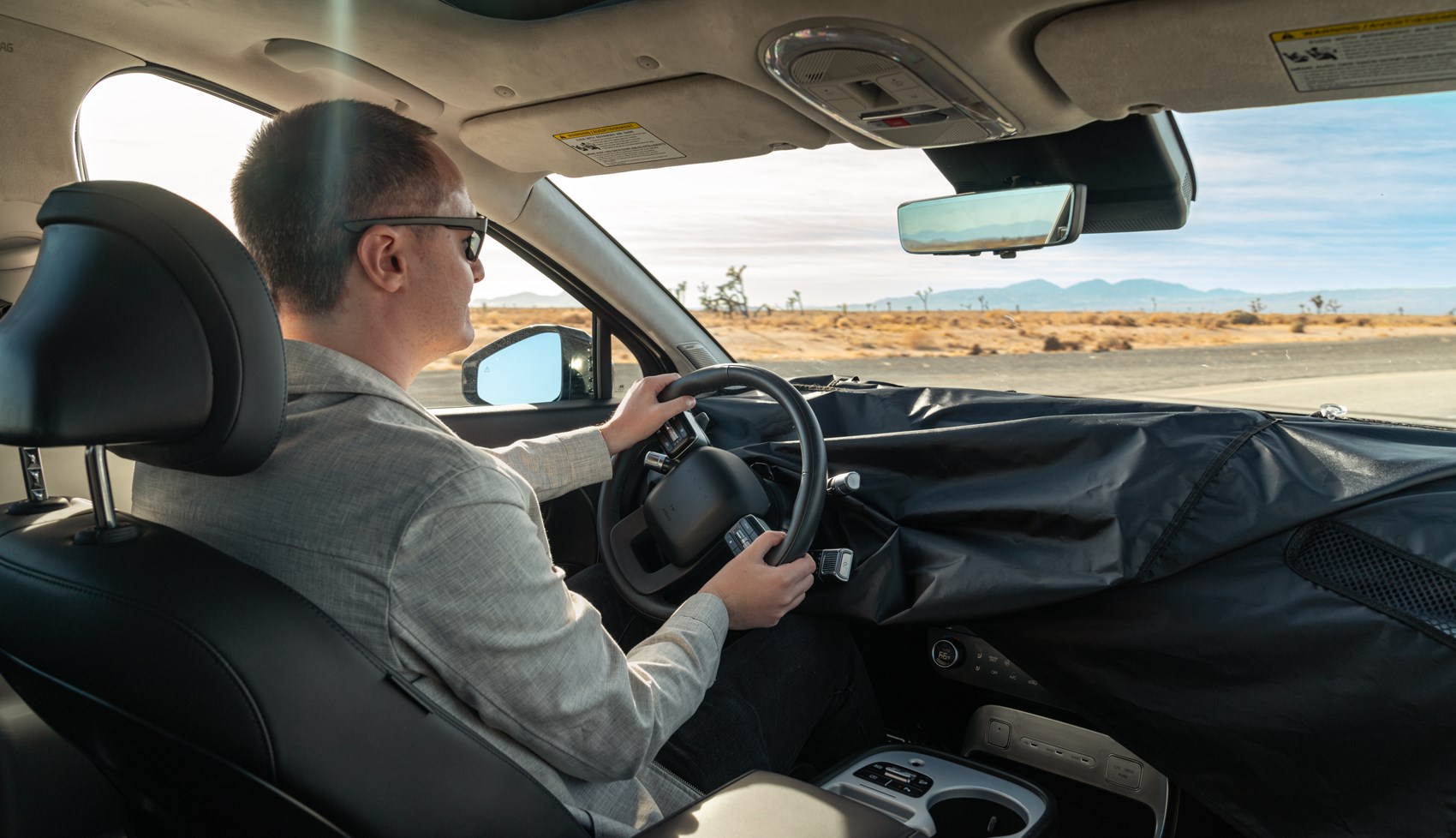
Hyundai also shouts about how quiet the Ioniq 9’s cabin is, with active noise cancelling and triple-glazed glass helping to insulate you from the outside world. Its efforts are moderately successful, with tyre noise being well damped. We did hear some bluster over the standard door mirrors, mind you; Hyundai also offers camera ‘mirrors’ with much smaller units that will likely cut through the air better.
After a few laps, we merge off the fake highway and head towards a what’s defined as a typical country road in the US. Think Hollywood hills, the forests of Colorado, up-state New York… that sort of thing. Albeit, in this scenario, decorated with Joshua trees and actual tumbleweed like we’ve invaded the film set of a Western.
That soft suspension setup quickly makes itself known in different ways charging around corners and hairpins; the Ioniq 9 is rather roly-poly, even with Hyundai saying this comes with a ‘Chassis Domain Control’ unit designed to keep the car balanced.
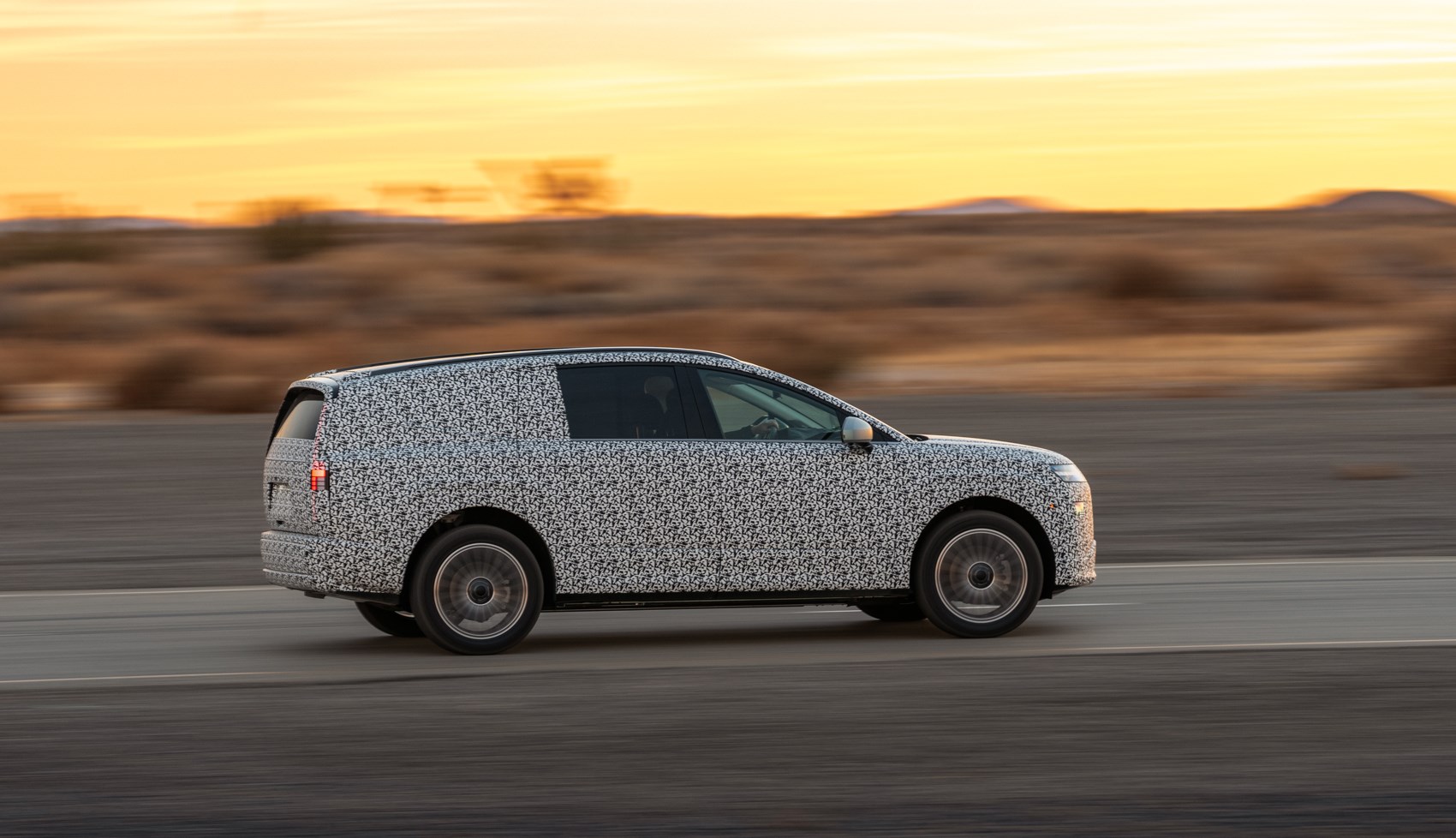
It’s here we also notice some other traits; namely the very relaxed steering. Again, the Ioniq 9 is a cruiser, not a bruiser, but there’s a small dead-spot at the centre. Fine for long-distance highway drives, but it leaves the Ioniq 9 feeling a little soggy darting around corners.
As for power, this Performance AWD model feels brisk enough – but only enough, leading us to believe that entry-level Long Range RWD model will feel a little ponderous. Interestingly, under hard acceleration, it feels as if the Ioniq 9’s motor software has been designed to really dampen that initial electric acceleration; there’s a small shove of power when you press the throttle hard, then more power is fed in a second later. That said, you can have a bit of fun with the 9 even with the traction control on; boot it hard into a corner and it really does grip – there’s very little understeer even when you’re being a tool, where you’re holding on for dear life. Poke it *very* hard and the tail will – only briefly – step out; not something those in the third row would be too happy about.
What’s the interior like?
The one we drove at Hyundai’s proving ground was all covered up, but we did sit and poke around some static versions of the Ioniq 9 while out in Los Angeles, and it’s an interesting combination.
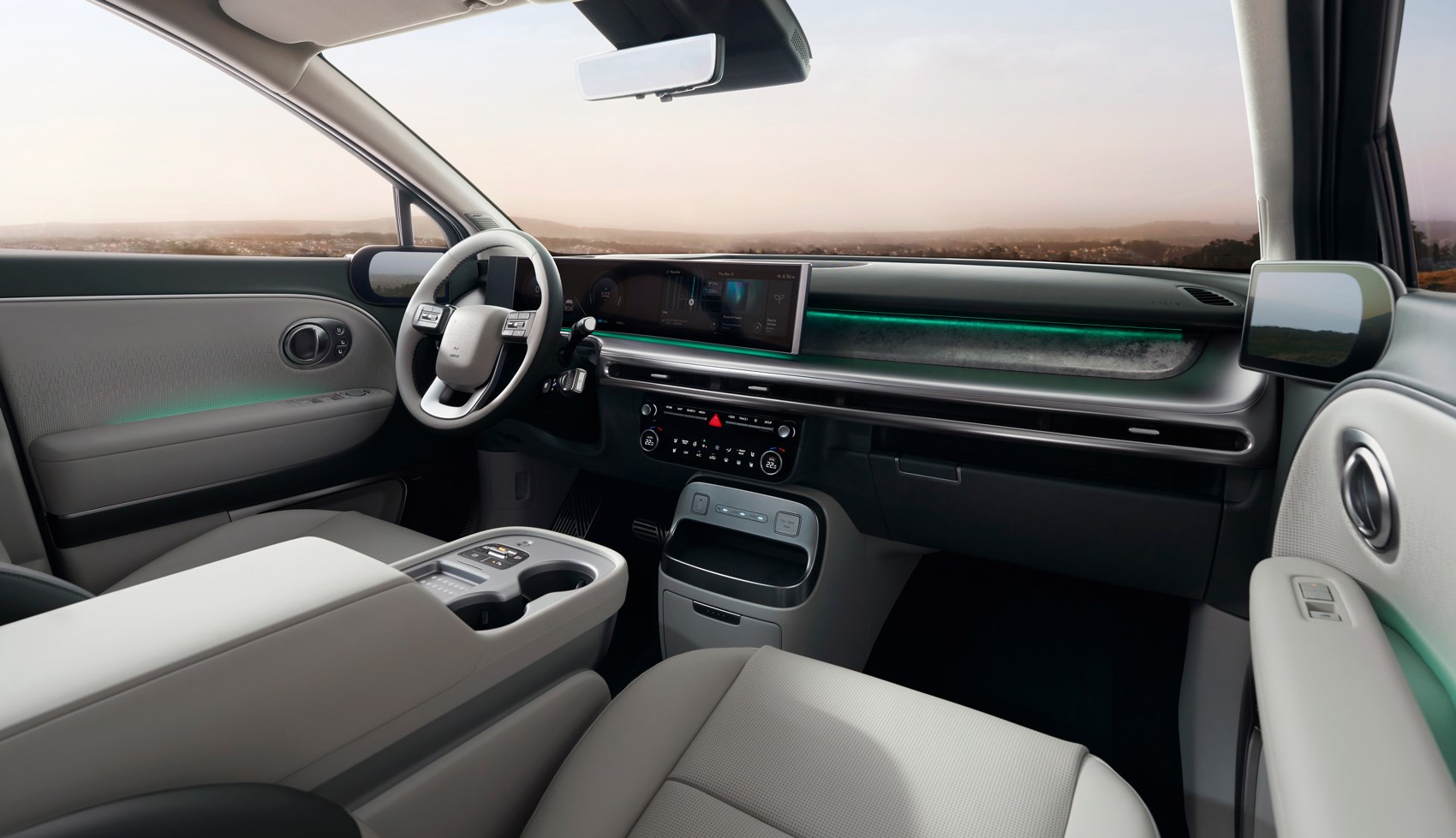
Even with the interior bagged up, the Ioniq 9 feels like a familiar Hyundai product. It starts with a jingle, its bongs are polite and gentle, and a lot of the switchgear is the same sort of stuff seen on cars like the Ioniq 5 and 6, as well as the Santa Fe and North American Palisade. The mix of physical and touch panels is welcome, and we’d argue plenty of thought has been put into it.
That said, we did feel like we were sat a little too high – but whether that has more to do with the seat placement or the steeply-raked windscreen to help aero, we’re not so sure after our short drive.
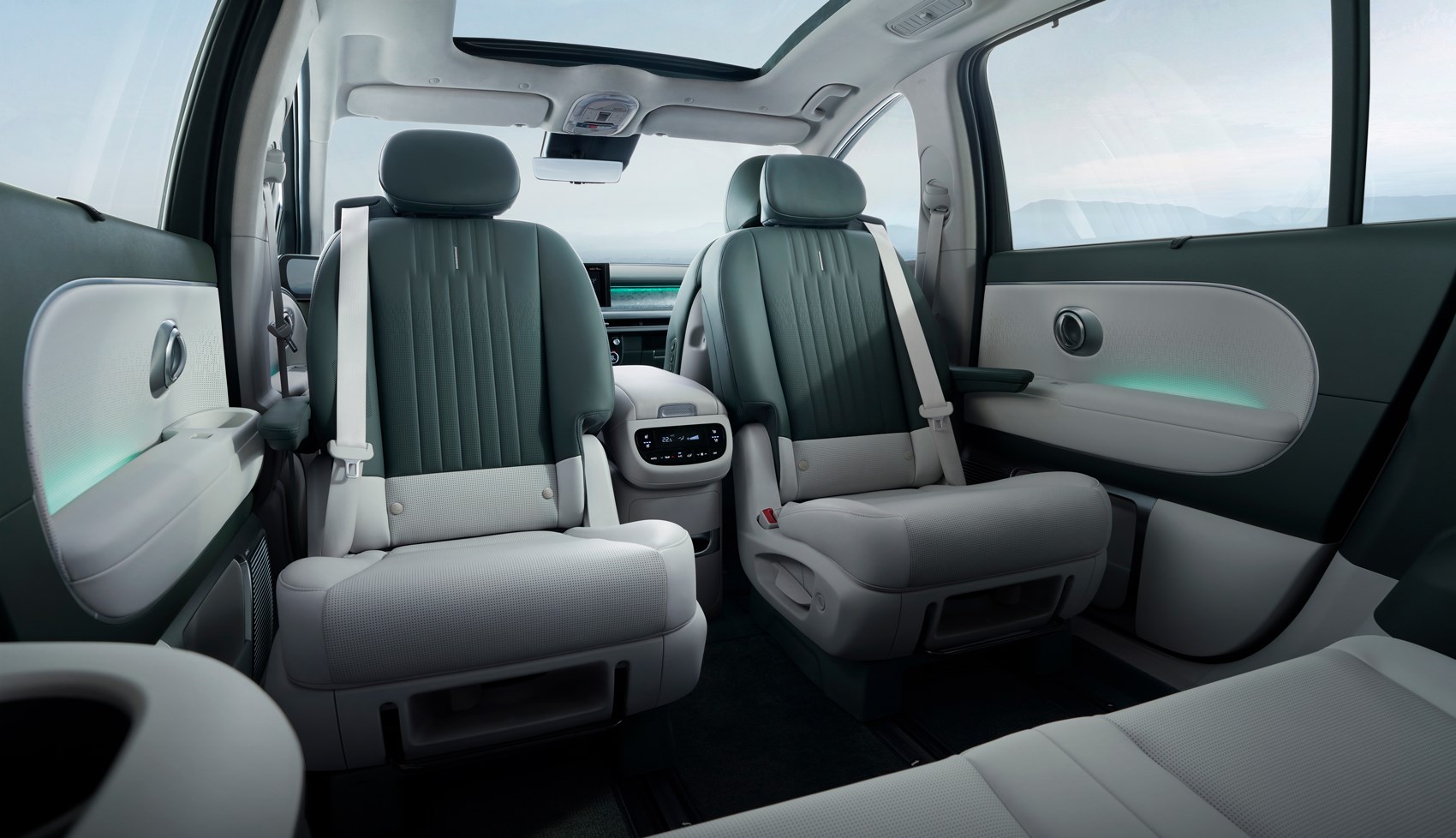
Loads of technology and features can be had on board. Hyundai’s ‘relaxation seats’ (which recline back very far and feature a leg rest) feature here again. But, enabled by the large interior space of the Ioniq 9, those relaxation seats stretch into both the front and second row if you spec the six-seat option. Like the EV9, if you choose the six-seat option, you can also have swivelling seats that rotate, allowing for easy access getting in and out and giving you the ability to turn them around to face the third row.
Verdict: Hyundai Ioniq 9 prototype
Hyundai’s clearly focused on the Ioniq 9 being a big, squishy cruiser designed for ease of use and low-stress drives on the motorway. Which makes total sense, given it’s exactly the kind of car aimed at big families that will likely do regular road trips. We’re unsure how something longer than a Range Rover will work in Europe, mind, and that soft suspension makes for a roly-poly ride setup.
Still – we’re looking forward to driving a finished Ioniq 9, likely in the first few months of 2025.
Specs are for Ioniq 9 Performance AWD